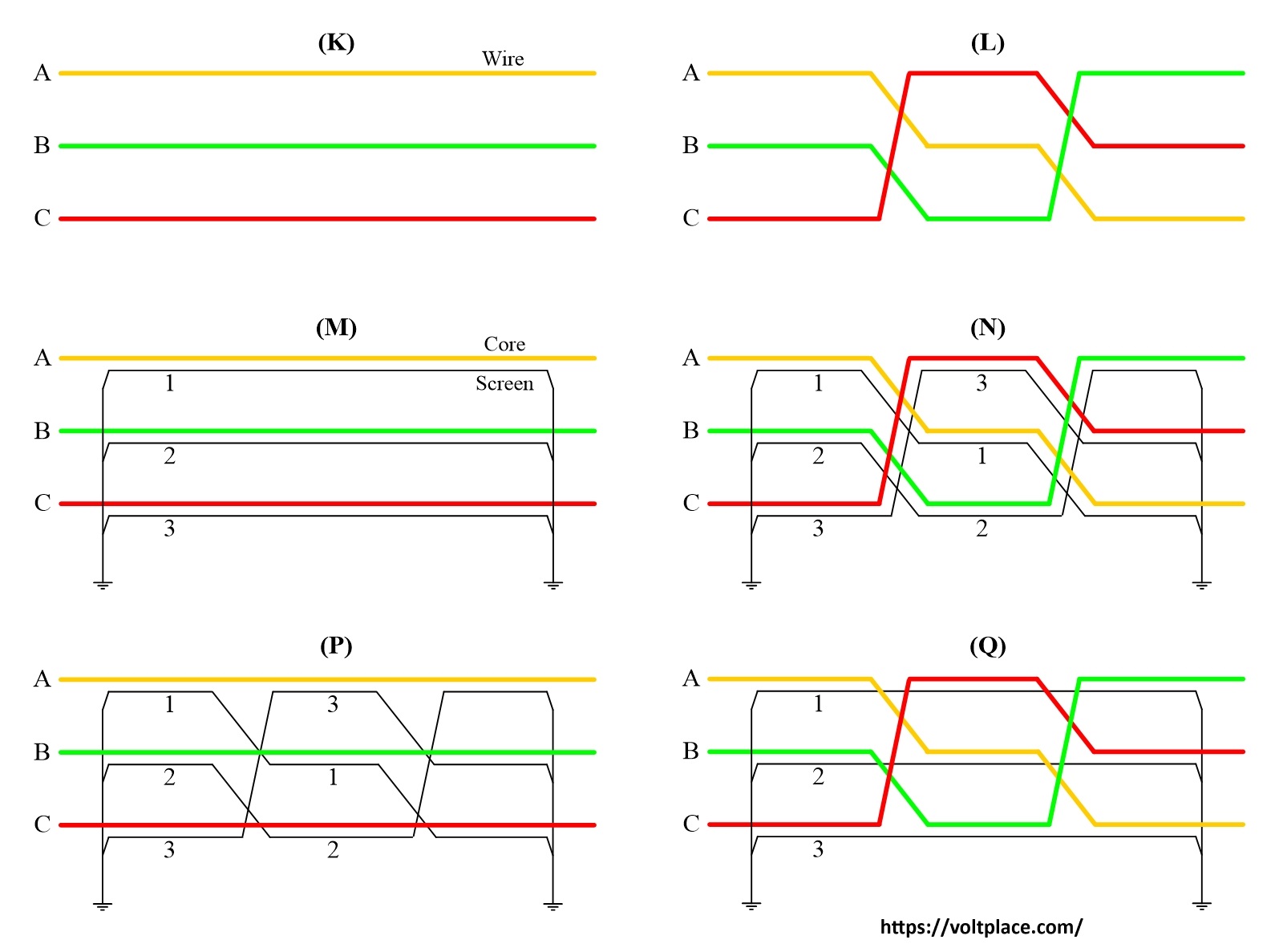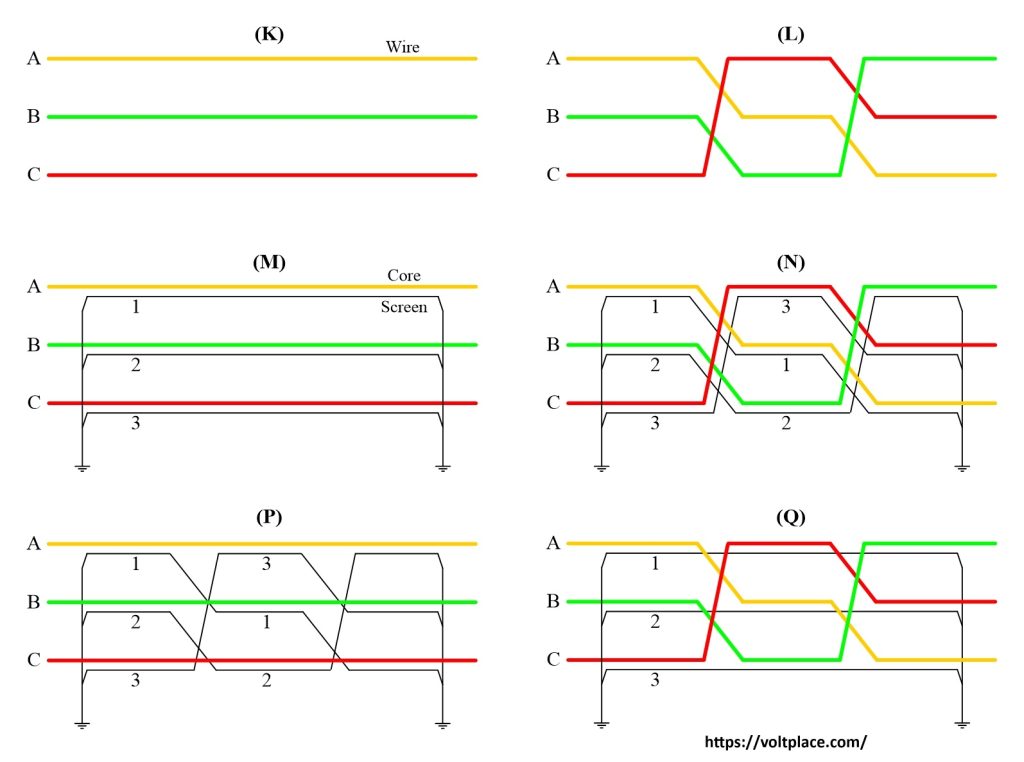
Transposition types and their purpose
Traditionally, the concept of “transposition” was used mainly for overhead lines (OHL) with a voltage of 330 kV and higher. For OHLs, the concept of “transposition” means a periodic change in the relative position of the three phase wires ABC. However, the situation has changed after the appearance of single-core cables with XLPE-insulation – the concept of “transposition” has also become an attribute of cable lines (CL). Unfortunately, with CLs the situation is more difficult than for OHLs, because each single-core cable has not only a core, but also a conductive screen. For this reason, there are six conductors for each CL at once (three cores ABC and three screens 123), and a large number of different options for the “transposition” of these six conductors can be offered. Thus, if the “transposition” was relatively simple for OHLs, but for CLs everything became more complicated. Let’s briefly discuss.

K – is the usual arrangement of three phase wires of the OHL.
L – is one complete transposition cycle of OHL phase wires, which allows you to align the parameters of three phases (primarily transverse capacitances, although longitudinal inductances too). It is usually used only on 330-800 kV OHLs with length of more than 150 km.
M – is the basic arrangement of the three single-core cables of the CL, provided that their screens 123 have a simple grounding on both sides.
N – is the transposition of the cables themselves, necessary to solve two problems:
1) Only for multi-circuit lines – A radical reduction in the 50 Hz voltage induced from a energized circuits to the cores and screens of a disconnected circuit, which is important to ensure the safety of personnel working on a disconnected circuit.
2) For any CL despite of the circuit number – Alignment of the CL parameters by phases (longitudinal inductances, since the capacitances of all cables are the same) – it makes sense only if the three single-core cables are arranged in a row, and not a triangle.
P – is a scheme M for which the screens 123 are transposed (screens cross-bonding), which allows to reduce the 50 Hz induced currents in the screens in normal operation mode, which is necessary for a radical reduction in active power losses in the screens, which allows:
1) Reduce the XLPE-insulation temperature and, therefore, increase the long-term permissible current of the CL.
2) Eliminate the need to pay for losses in screens (saving up to 10 thousand euro per each year of the CL in operation).
Q – is a scheme that is a combination of schemes N and P, and has all their advantages (personnel safety, equal inductance of phases, no power losses in screens). The Q scheme looks like a “transposition of cores”, although in fact, by its properties, it is common CL with transposed cables and, at the same time, transposed (cross-bonded) cable screens.
